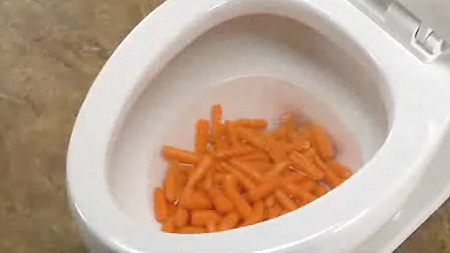Can You to Flush Food in the Toilet?
Can You to Flush Food in the Toilet?
Blog Article
Any individual has their own individual piece of advice when it comes to Is it safe to flush food (especially rice) down the toilet?.

Introduction
Lots of people are often faced with the predicament of what to do with food waste, especially when it pertains to leftovers or scraps. One common question that arises is whether it's alright to purge food down the bathroom. In this post, we'll look into the reasons why people may take into consideration purging food, the consequences of doing so, and alternate approaches for appropriate disposal.
Reasons that individuals may think about purging food
Absence of understanding
Some individuals might not recognize the possible injury triggered by flushing food down the toilet. They may mistakenly think that it's a safe technique.
Comfort
Flushing food down the toilet might appear like a quick and very easy option to dealing with undesirable scraps, specifically when there's no close-by trash bin available.
Negligence
In many cases, people may simply pick to flush food out of large laziness, without considering the effects of their activities.
Consequences of flushing food down the bathroom
Environmental effect
Food waste that ends up in waterways can contribute to pollution and injury water ecological communities. In addition, the water made use of to flush food can strain water sources.
Pipes problems
Flushing food can bring about stopped up pipes and drains, creating expensive plumbing repair work and inconveniences.
Kinds of food that ought to not be purged
Fibrous foods
Foods with coarse structures such as celery or corn husks can obtain tangled in pipelines and cause obstructions.
Starchy foods
Starchy foods like pasta and rice can take in water and swell, leading to obstructions in pipelines.
Oils and fats
Greasy foods like bacon or cooking oils ought to never be purged down the commode as they can strengthen and trigger blockages.
Proper disposal approaches for food waste
Making use of a waste disposal unit
For homes furnished with garbage disposals, food scraps can be ground up and flushed via the plumbing system. However, not all foods appropriate for disposal in this way.
Recycling
Certain food product packaging materials can be reused, decreasing waste and minimizing ecological impact.
Composting
Composting is an environmentally friendly means to throw away food waste. Organic materials can be composted and utilized to improve dirt for gardening.
The importance of appropriate waste monitoring
Lowering environmental injury
Proper waste administration techniques, such as composting and recycling, help minimize contamination and protect natural deposits for future generations.
Protecting plumbing systems
By preventing the method of flushing food down the toilet, house owners can protect against pricey plumbing repair services and preserve the stability of their pipes systems.
Verdict
In conclusion, while it may be alluring to flush food down the bathroom for ease, it is essential to recognize the potential effects of this action. By adopting appropriate waste management techniques and taking care of food waste sensibly, people can add to healthier pipes systems and a cleaner atmosphere for all.
FLUSH FOOD DOWN THE TOILET?
FLUSHING FOOD CAN CAUSE BLOCKED DRAINS IN YOUR HOME
All of the plumbing fixtures in your home are connected to the same sewer pipe outside of your home. This outdoor sewer pipe is responsible for transporting all the wastewater from your home to the Council sewer mains. Even small pieces of food that go down the kitchen sink can cause problems for your sewer. It should therefore be obvious that flushing larger bits of food, such as meat, risks a clog in either the toilet itself or the sewer pipes. Flushing greasy food is even more problematic because oil coagulates when it cools, coating the interior lining of your pipes.
THE TOILET IS NOT A BIN
Food isn’t the only thing that people shouldn’t be flushing down the toilet. People use the toilet to dispose of all kinds of things such as tampons, makeup wipes, dental floss, kitty litter and even underwear. Water goes to great lengths to educate residents about the high costs and stress placed on wastewater treatment systems simply from people flushing the wrong stuff down the toilet. It costs taxpayers millions of dollars each year, and homeowners thousands in blocked drain repairs.
FLUSHING FOOD IS A WASTE OF WATER
Flushing food is a waste of our most precious resource - water. In June this year Level 1 water restrictions were introduced to protect water supply from drought conditions. Much of New South Wales continues to be affected by prolonged drought with recent figures revealing up to 97 per cent of the state remains in drought. Depending on whether you have a single or dual flush toilet, every single flush uses between five and 11 litres of water. In the current climate this is a huge amount of water to be wasting on flushing food that should be placed in the bin (or better yet, the compost).
https://www.jabplumbingsolutions.com.au/blog/can-you-flush-food-down-the-toilet

I hope you liked our part on Is it safe to flush food (especially rice) down the toilet?. Thanks so much for taking time to read through our content. Sharing is good. Helping others is fun. We recognize the value of reading our article about What Can Happen If You Flush Food Down the Toilet?.
Schedule Today Report this page